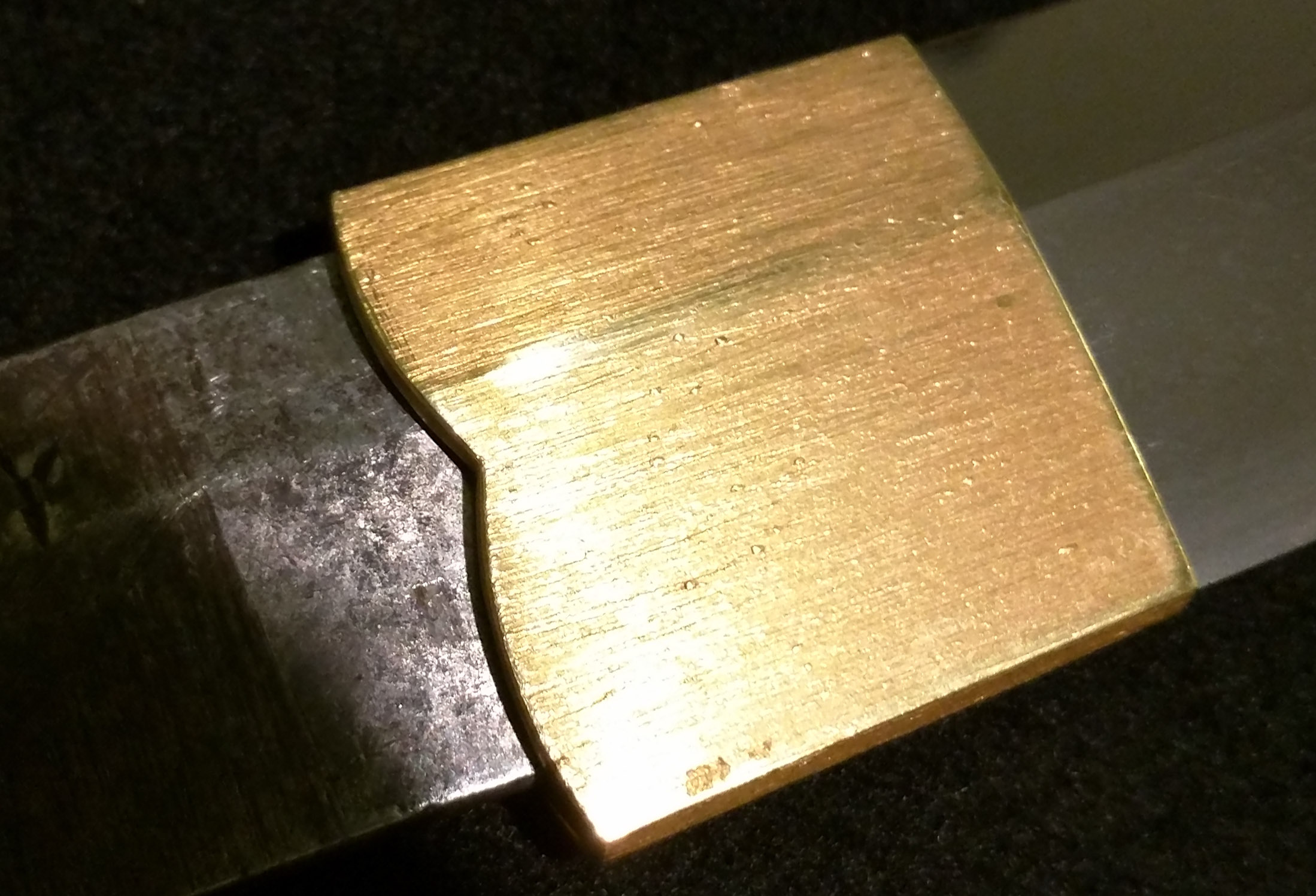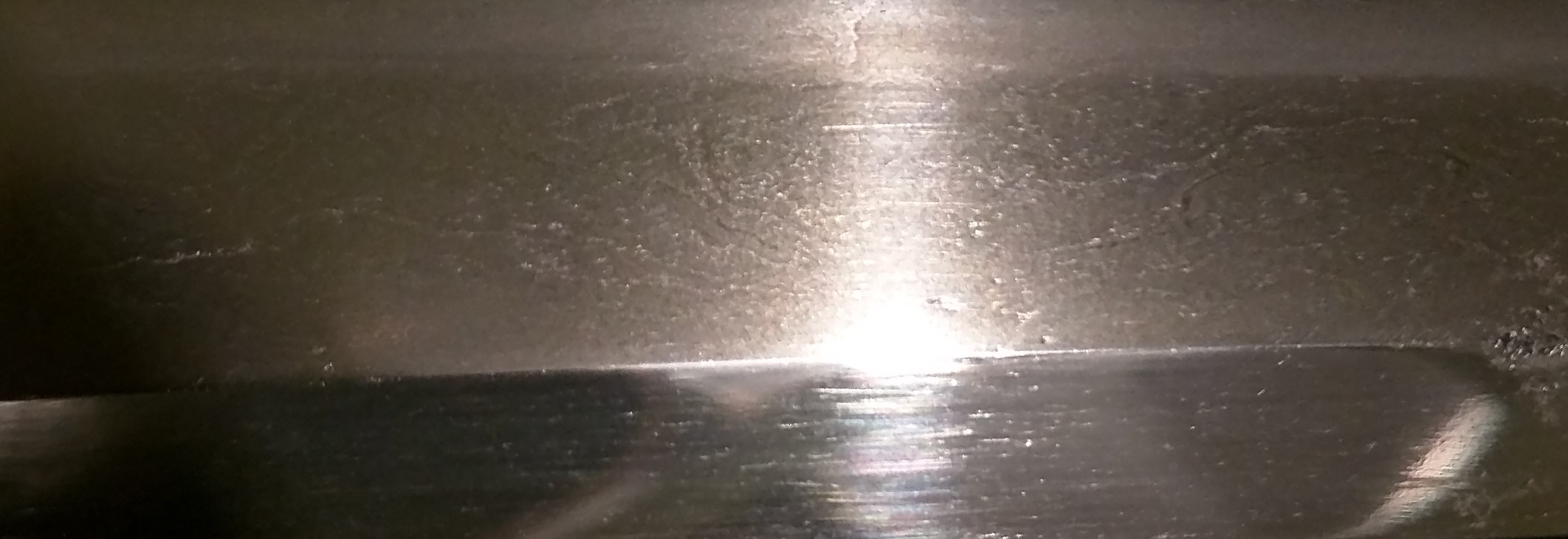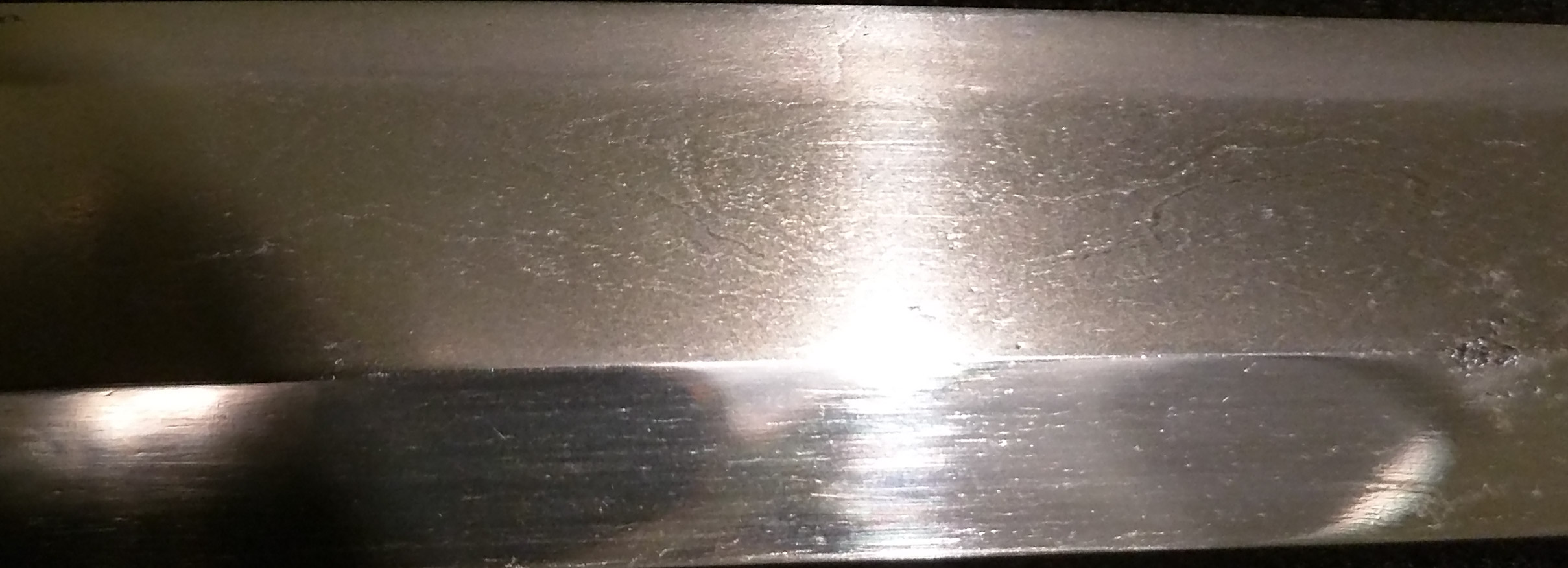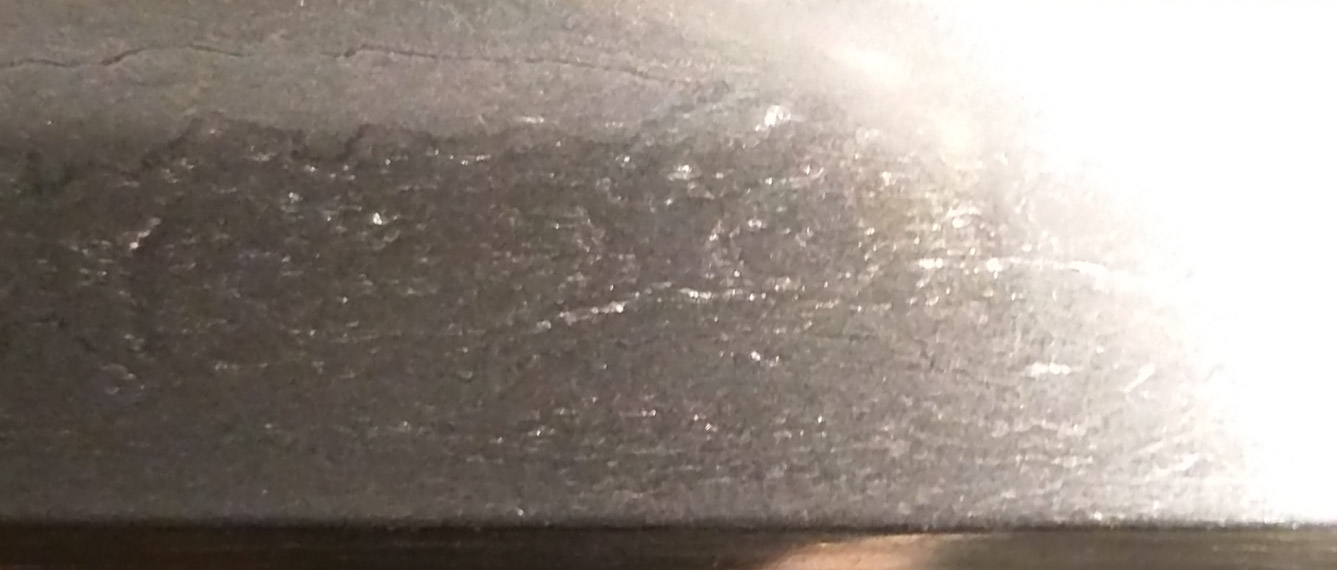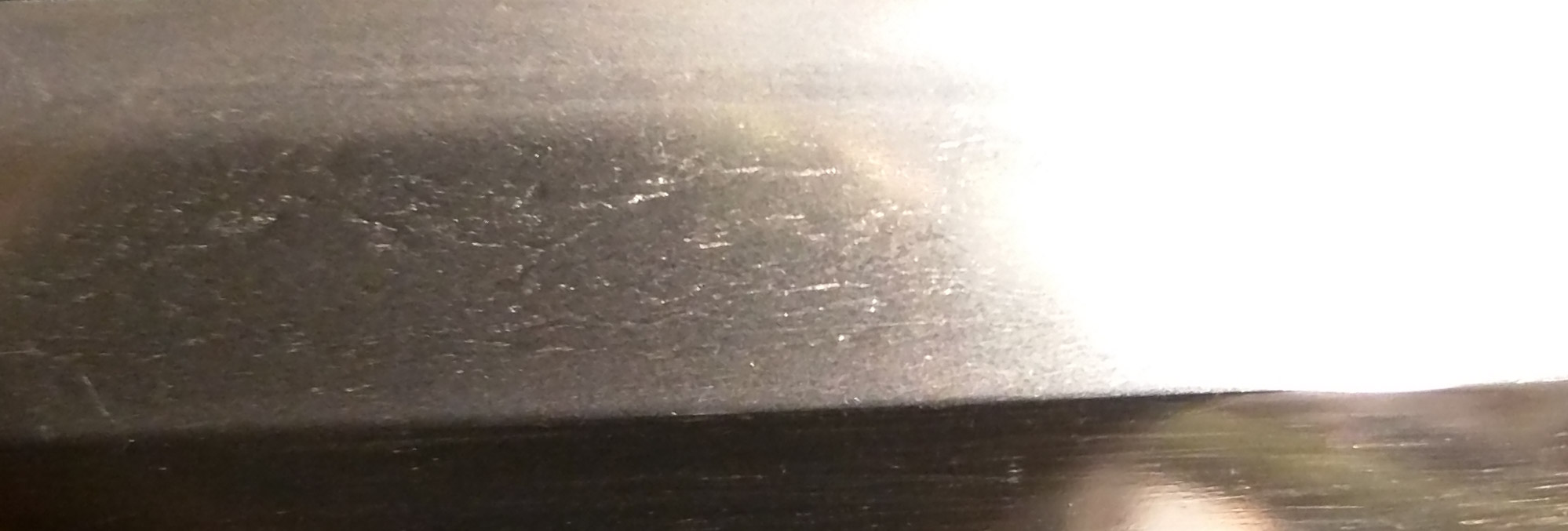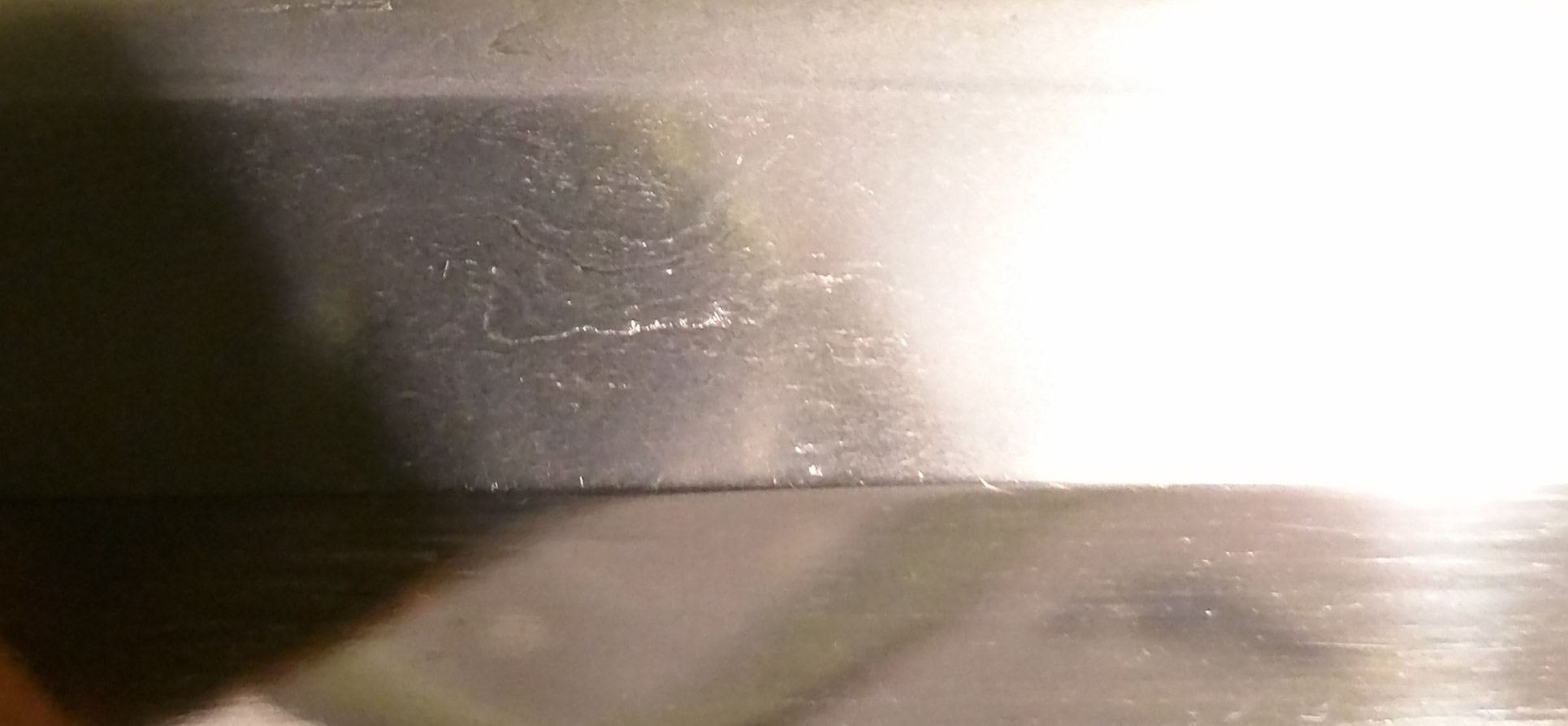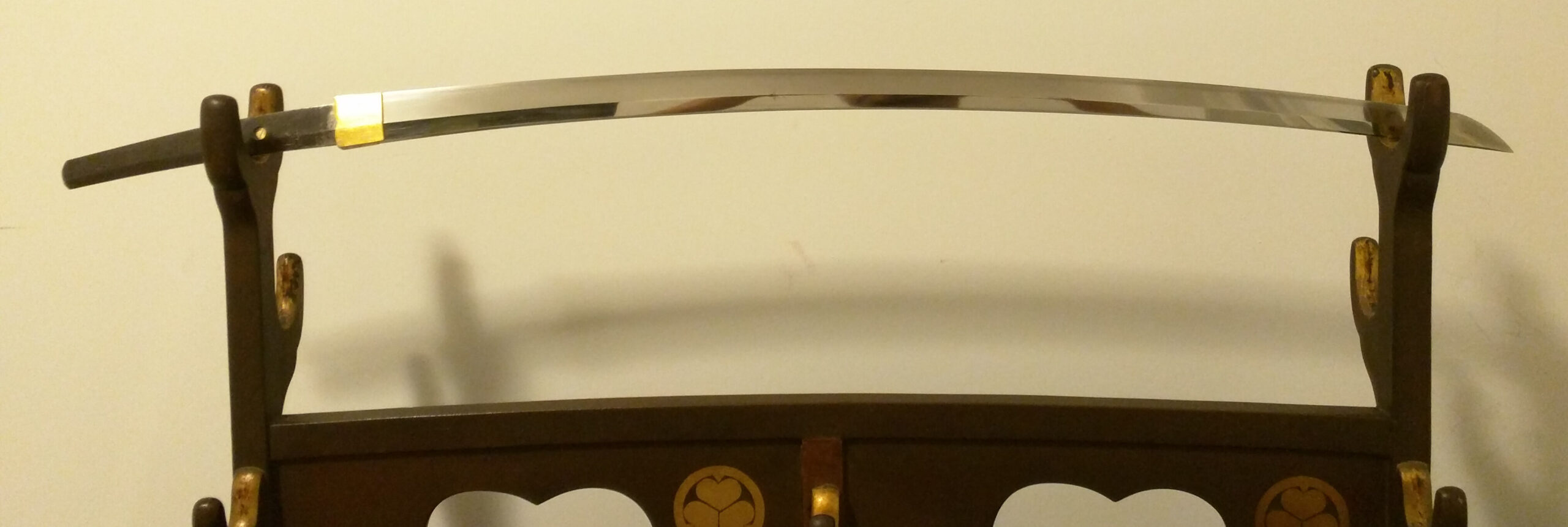MASAYOSHI (正義), 2nd gen., Bunsei (文政, 1818-1830), Musashi – “Hosokawa Masakata saku” (細川正方作), “Hosokawa Morihide saku” (細川守秀作), “Hosokawa Masayoshi saku” (細川正義作), “Yashū-jū Minamoto Masayoshi saku” (野州住源正義作), “Sakuyō-shi Hosokawa Masayoshi” (作陽士細川正義), “Sakuyō bakka-shi Hosokawa Masayoshi” (作陽幕下士細川正義), “Sakuyō bakka-shi Hosokawa Chikaranosuke Minamoto Masayoshi” (作陽幕下士細川主税佐源正義), “Tōto ni oite Sakuyō-shi Hosokawa Chikaranosuke Minamoto Masayoshi” (於東都 作陽士細川主税佐源正義), real name Hosokawa Chikaranosuke Shōzō (細川主税佐政蔵), he was the son of the 1st gen. Masayoshi and was born in Kanuma (鹿沼) in Shimotsuke province, he accompanied his father to Edo where both under Suishinshi Masahide (水心子正秀), he signed in early years with Masakata (正方) and Morihide (守秀) and was later employed by the Tsuyama fief (津山藩) of Mimasaka province but he worked from Edo, there he died on the sixth day of the sixth month Ansei five (安政, 1858) at the age of 73, together with Taikei Naotane (直胤) he is regarded as the best student of Suishinshi Masahide and he trained almost as many smiths as his master, in his early years he worked in the Ōsaka-shintō style, that means he copied tōran-midare interpretations and made under the name Morihide some joint works with his master Masahide, in his later years he changed to the Sōshū tradition, he produced mainly tachi and katana, tantō are rare but some of them are extant, in the following Hosokawa Masayoshi´s workmanship in the individual traditions is desscribed: Bizen tradition: the blades are long, have a deep sori and funbari, usually a bōhi with soebi or tsurebi is added, the jihada is a dense ko-mokume, the hamon is a chōji-midare with broad yakihaba in nioi-deki with many long ashi, the nioiguchi is compact, dark and hard-looking spots are seen sometimes along the yakigashira; Sōshū tradition: the blades resemble the ō-suriage-sugata of Nanbokuchō works, that means they have a relative large kissaki, scarce fukura, but come with a thick kasane and plenty of hira-niku, also a bōhi with soebi can be found, the jihada is a rough ō-itame with plenty of ji-nie and sparkling chikei, the hamon is an ō-midare in rough nie-deki, the habuchi looks frayed and loose and partially some dark and hard-looking spots are seen along the yakigashira, also ha-hada is visible, the hamon shows also vivid sunagashi and inazuma, the bōshi is a small dimensioned midare-komi, the tangs are long and have sori, the signatures is chiselled as tachi-mei, the yasurime are very regular and thick sujikai with keshō, that means he added every file stroke separately, like Suishinshi Masahide also Masayoshi often added a koku´in seal, jōjō-saku
$4,500.00

